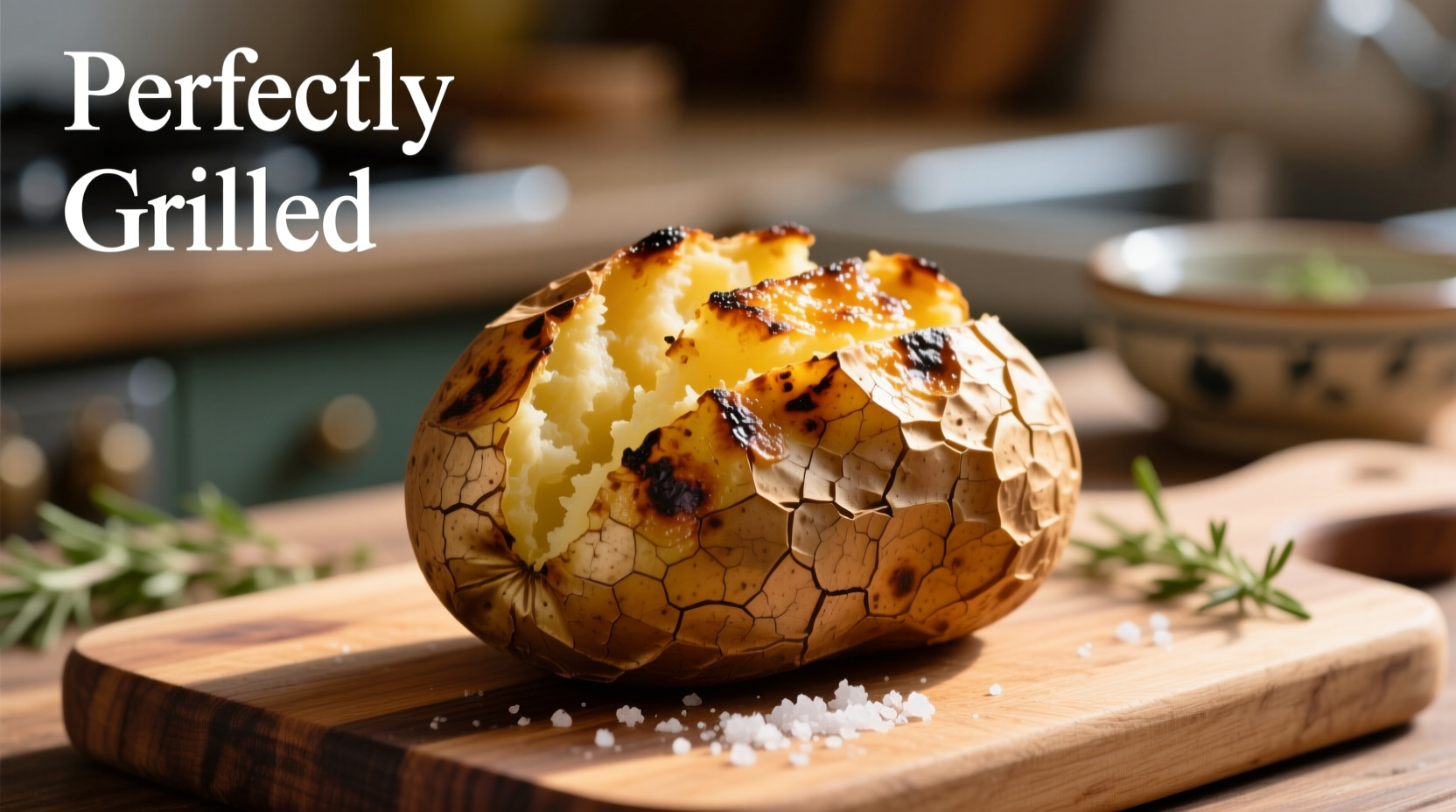Why Grilling Beats Oven-Baking for Potatoes
Grilling transforms ordinary potatoes into culinary masterpieces with crispy skins and fluffy interiors. Unlike oven baking, the direct radiant heat creates a unique texture contrast while infusing subtle smoky notes. Professional chefs prefer this method for its hands-off approach and superior flavor development—no more soggy skins or uneven cooking.

Your Grilling Roadmap: From Selection to Serving
Step 1: Choosing the Right Potato (The Foundation)
Russet potatoes reign supreme for grilling due to their thick skins and high starch content. Their dense structure withstands direct heat without collapsing, yielding that coveted fluffy interior. Avoid waxy varieties like red potatoes—they'll turn gummy when grilled. For best results, select uniformly sized potatoes (about 8-10 ounces each) to ensure even cooking.
| Potato Variety | Grill Suitability | Texture Result | Best For |
|---|---|---|---|
| Russet | ★★★★★ | Fluffy interior, crispy skin | Classic baked potato experience |
| Sweet Potato | ★★★★☆ | Creamy interior, caramelized skin | Sweet applications |
| Yukon Gold | ★★★☆☆ | Buttery interior, moderately crisp skin | When russets unavailable |
| Red Potato | ★☆☆☆☆ | Dense, sometimes gummy | Avoid for direct grilling |
Step 2: Preparation Secrets Professionals Use
Never skip piercing—those 8-10 fork holes prevent explosive steam buildup. For optimal results, rub potatoes with olive oil (not butter, which burns) and season generously with coarse salt. The salt draws out moisture from the skin surface, creating that professional-level crispness. Skip the foil wrapping; it steams rather than grills your potato, defeating the purpose of using the grill.
Step 3: Mastering Grill Temperature Zones
Set up a two-zone fire: direct medium-high heat (375-400°F) for initial searing, and indirect medium heat (325-350°F) for finishing. Start potatoes directly over flames for 5 minutes per side to create grill marks and seal the skin, then move to indirect heat. This technique prevents burnt exteriors with raw interiors—a common grilling mistake.
Step 4: Timing Based on Potato Size (No Guesswork)
USDA food safety guidelines confirm potatoes are safe when internal temperature reaches 205-210°F. Use this foolproof timing chart:
- Small potatoes (6-8 oz): 35-45 minutes
- Medium potatoes (8-10 oz): 45-55 minutes
- Large potatoes (10-12 oz): 55-65 minutes
Turn every 15 minutes using tongs—never pierce with a fork during cooking, which releases precious steam. The potato's done when it yields slightly to gentle pressure and a skewer slides in with no resistance.
Step 5: The Perfect Finish and Serving
Rest grilled potatoes wrapped in clean kitchen towels for 5 minutes—this allows residual heat to finish cooking the center evenly. Slice open, fluff with a fork, and add toppings. For restaurant-quality results, mix a tablespoon of warm milk with your butter before adding—it incorporates better than cold butter.
Grilling Timeline Evolution: From Campfire to Precision Cooking
Grilled potatoes have evolved from primitive campfire cooking to precision culinary technique. Early Native American tribes wrapped potatoes in mud and buried them in fire pits (pre-1800s). By the mid-1900s, foil wrapping became popular with backyard grilling's rise. Modern techniques, informed by food science research from institutions like the Culinary Institute of America, now emphasize direct heat exposure for superior texture. Today's method balances tradition with understanding of starch gelatinization temperatures (190-212°F), creating the perfect fluffy interior.
When to Choose Grill vs. Oven: Context Boundaries
Grilling shines when you want smoky flavor and crispy skins, but has limitations. Choose grilling when:
- You're already using the grill for other foods
- Outdoor temperatures are below 90°F (prevents overheating kitchen)
- You want hands-off cooking (set it and forget it)
- Entertaining outdoors for authentic experience
Avoid grilling when:
- Rain threatens your cookout
- Cooking more than 4 potatoes simultaneously (ovens handle volume better)
- Extreme heat makes outdoor cooking uncomfortable
- You need precise timing for a multi-course meal
Pro Tips to Avoid Common Pitfalls
Mistake: Using cold potatoes straight from the fridge
Solution: Bring to room temperature for 30 minutes first—reduces cooking time by 15% and prevents cracking
Mistake: Overloading with toppings before cooking
Solution: Add only oil and salt pre-grill; save toppings for after cooking to maintain texture
Mistake: Guessing doneness by touch alone
Solution: Use an instant-read thermometer—205-210°F internal temperature guarantees perfect texture











 浙公网安备
33010002000092号
浙公网安备
33010002000092号 浙B2-20120091-4
浙B2-20120091-4